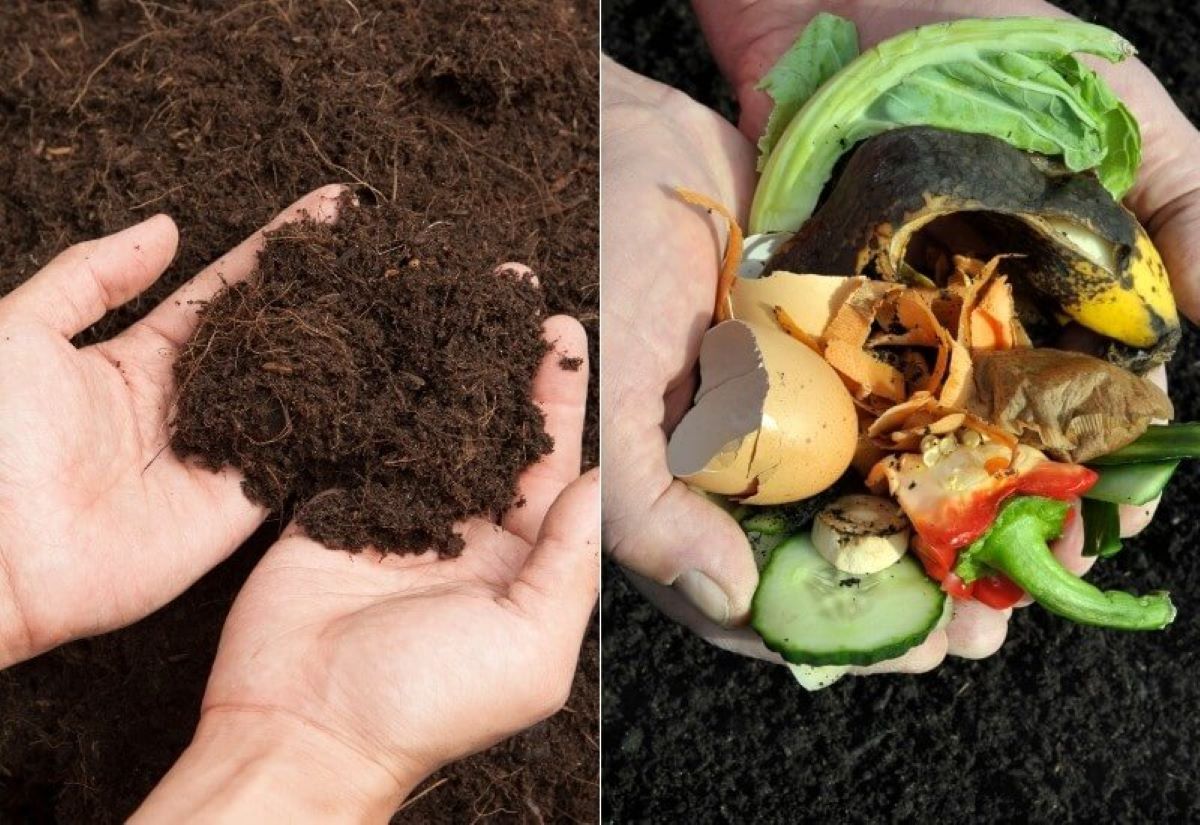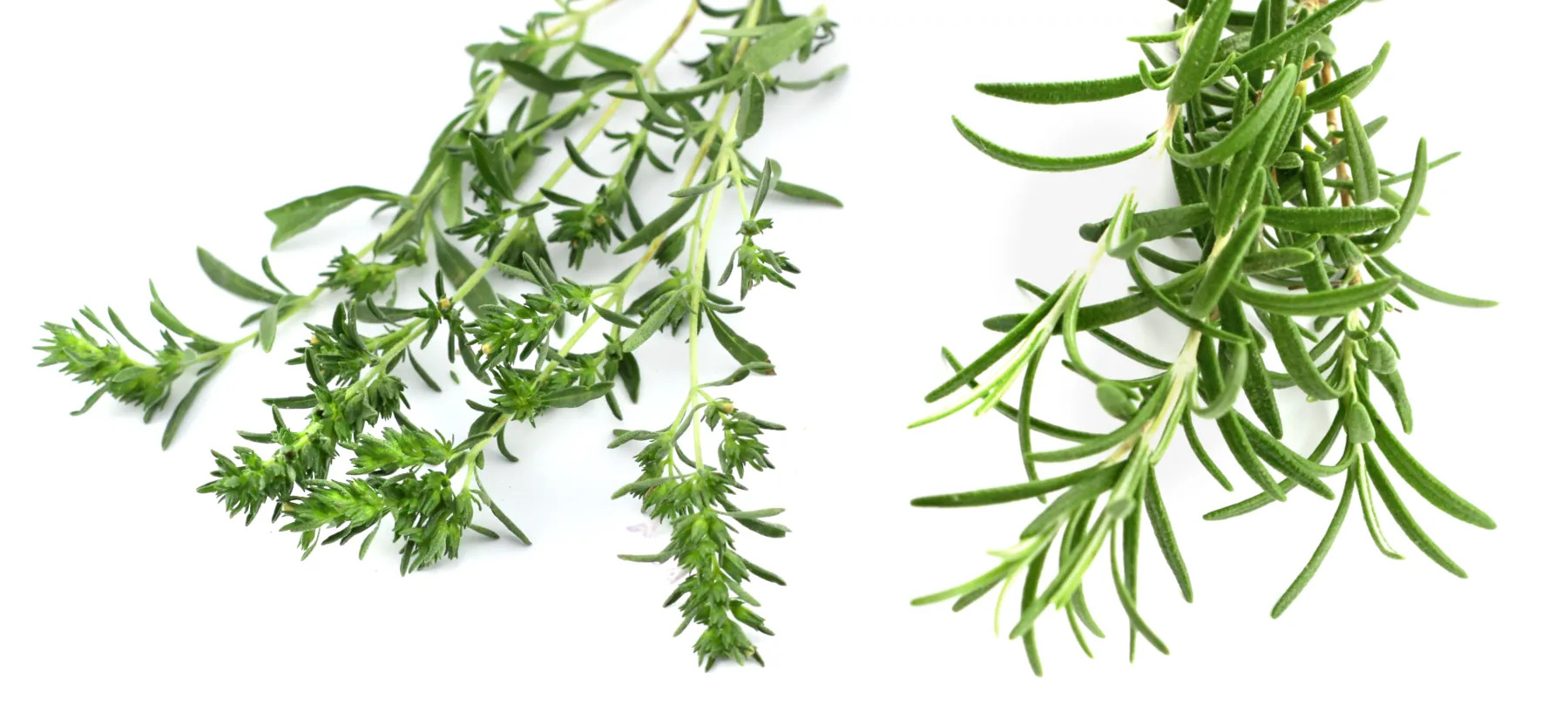Home>Gardening News and Trends>Latest News>What Is The Difference Between Iv Saline And Irrigation Saline


Latest News
What Is The Difference Between Iv Saline And Irrigation Saline
Modified: January 22, 2024
Discover the Latest News on the Difference Between IV Saline and Irrigation Saline. Explore the benefits of each and make an informed decision for your medical or irrigation needs.
(Many of the links in this article redirect to a specific reviewed product. Your purchase of these products through affiliate links helps to generate commission for Chicagolandgardening.com, at no extra cost. Learn more)
Table of Contents
Introduction
When it comes to medical procedures and treatments, saline solutions play a crucial role in various applications. Two common types of saline solutions used in healthcare settings are IV saline and irrigation saline. Although they may seem similar at first glance, there are key differences between these two solutions.
IV saline, also known as intravenous saline, is a sterile solution that is administered directly into the veins of patients. It is used to replenish fluids, balance electrolytes, and deliver medications during medical procedures or in cases of dehydration. On the other hand, irrigation saline, also referred to as sterile irrigation solution, is used for cleaning and irrigating wounds, surgical sites, and body cavities. It acts as a gentle cleanser, removing debris and promoting healing.
Understanding the differences between IV saline and irrigation saline is essential for healthcare professionals, as it impacts their usage, concentrations, and sterility. By delving deeper into their composition, uses, and application methods, we can gain a better understanding of how these two saline solutions differ from one another.
Definition of IV Saline
IV saline, or intravenous saline, is a sterile solution composed of sodium chloride (salt) dissolved in water. It is specifically formulated to be administered directly into the veins of patients through an intravenous (IV) line.
The primary purpose of IV saline is to replenish fluids and restore electrolyte balance in patients. This is particularly important in cases of dehydration, excessive fluid loss, or when patients are unable to consume fluids orally.
The composition of IV saline typically consists of 0.9% sodium chloride, which is known as normal saline or isotonic saline. This concentration is designed to be similar to the body’s natural fluids, ensuring compatibility and minimizing the risk of cellular damage.
Aside from replenishing fluids, IV saline is often used as a vehicle for delivering medications. Healthcare providers can mix certain medications, such as antibiotics or electrolyte replacements, with saline solution for efficient and safe administration.
The sterile nature of IV saline is of utmost importance to prevent infections and complications. Healthcare facilities adhere to strict protocols to ensure that the IV saline is free from contaminants and meets the required standards of sterility.
In summary, IV saline is a sterile solution composed of sodium chloride dissolved in water. It is administered directly into the veins to replenish fluids, restore electrolyte balance, and deliver medications.
Definition of Irrigation Saline
Irrigation saline, also known as sterile irrigation solution, is a specialized saline solution that is used for cleansing and irrigating wounds, surgical sites, and body cavities. It is a gentle and sterile solution that aids in the removal of debris, bacteria, and other contaminants from the affected area.
The composition of irrigation saline is similar to IV saline in that it consists of sodium chloride (salt) dissolved in water. However, the concentration of saline in irrigation solution is typically lower than that of IV saline. The reduced concentration minimizes discomfort or irritation that may occur when irrigating sensitive tissues.
One of the primary uses of irrigation saline is in wound care. It is commonly used to cleanse wounds, removing dirt, bacteria, and dead tissue to promote healing. The gentle stream of saline solution helps in reducing the risk of infection and maintaining a moist wound environment that supports the healing process.
In surgical procedures, irrigation saline is used to cleanse and irrigate surgical sites. This helps remove blood clots, debris, and any remaining bacteria, reducing the risk of infection and ensuring a clean environment for the surgical team.
Another important application of irrigation saline is in the medical field, where it is used to clean body cavities during procedures such as bladder irrigation or eye irrigation. The sterile solution aids in flushing out irritants, medications, or foreign bodies from the affected area, assisting in healing and preventing infections.
It is crucial to maintain strict sterility when using irrigation saline to minimize the risk of introducing contaminants to the wound or body cavity being treated. This involves using sterile containers, ensuring proper storage, and adhering to established protocols to prevent contamination.
In summary, irrigation saline is a sterile solution used for cleansing and irrigating wounds, surgical sites, and body cavities. It aids in removing debris, bacteria, and contaminants, promoting healing and preventing infections.
Composition of IV Saline
IV saline is composed primarily of sodium chloride (salt) dissolved in water. The most commonly used concentration of IV saline is known as normal saline or isotonic saline, which contains 0.9% sodium chloride.
In addition to sodium chloride, IV saline may also contain small amounts of other electrolytes such as potassium and calcium. These electrolytes are essential for maintaining proper fluid balance and cellular function within the body.
The sodium chloride present in IV saline plays a crucial role in restoring fluid balance in patients. It helps replenish lost fluids, maintain blood pressure, and support various bodily functions.
The sterile nature of IV saline is a crucial consideration in its composition. It must be free from any contaminants or impurities to prevent infections or complications when administered intravenously.
IV saline is typically stored in sealed containers to maintain its sterility. It is important to ensure that the container is not damaged or compromised in any way before use to prevent contamination.
The pH level of IV saline is also carefully regulated to ensure compatibility with the body’s fluids. It is typically within the range of 4.5 to 7.0, which is considered safe for intravenous administration.
Overall, the composition of IV saline primarily consists of sodium chloride dissolved in water, with additional electrolytes in certain formulations. It is crucial for maintaining fluid balance and supporting various bodily functions.
Composition of Irrigation Saline
Irrigation saline, like IV saline, is primarily composed of sodium chloride (salt) dissolved in water. However, there are some notable differences in the composition of irrigation saline compared to IV saline.
The concentration of salt in irrigation saline is typically lower than that of IV saline. This lower concentration, often referred to as hypotonic saline, helps to minimize discomfort and irritation when the solution is used for irrigation purposes.
In addition to sodium chloride, irrigation saline may also contain small amounts of other electrolytes such as potassium and calcium. These electrolytes contribute to maintaining proper fluid balance and cellular function within the body.
The pH level of irrigation saline is also adjusted to ensure compatibility with the body’s tissues. It is usually within a slightly acidic range, typically between 5.0 and 7.0, to optimize its effectiveness in cleansing wounds and body cavities.
Similar to IV saline, irrigation saline is prepared and stored in sterile containers to maintain its sterility. It is crucial to ensure the integrity of the container and avoid contamination before use.
It is worth noting that the specific concentration and composition of irrigation saline may vary depending on the intended application and medical facility protocols. Different formulations may be used for different types of irrigation, such as wound irrigation or bladder irrigation.
In summary, irrigation saline is primarily composed of sodium chloride dissolved in water, but with a lower concentration compared to IV saline. It may also contain other electrolytes and is adjusted to a slightly acidic pH level. The sterile nature of irrigation saline is also maintained to prevent contamination during use.
Uses of IV Saline
The uses of IV saline are numerous and play a vital role in various medical procedures and treatments. Here are some common applications of IV saline:
- Fluid Replacement: IV saline is used to replenish fluids in patients who are dehydrated, suffering from fluid loss due to conditions like vomiting or diarrhea, or unable to consume liquids orally. It helps restore the body’s fluid balance and prevent complications associated with dehydration.
- Electrolyte Balance: IV saline contains electrolytes such as sodium, potassium, and calcium, which are essential for proper cellular function. It is used to balance electrolyte levels in patients with imbalances caused by conditions like kidney disease, hormonal disorders, or certain medications.
- Medication Administration: IV saline serves as a vehicle for delivering medications directly into the bloodstream. Healthcare providers can mix medications, such as antibiotics, pain relievers, or electrolyte replacements, with IV saline for effective and efficient administration.
- Surgical Procedures: IV saline is used during surgical procedures to maintain fluid balance and blood pressure. It helps prevent dehydration and ensures proper organ perfusion. It may also be used to flush surgical sites and remove debris or blood clots.
- Blood Transfusion: IV saline is often used as a primary fluid for blood transfusions. It allows for the safe and efficient administration of blood products and helps maintain the viability of red blood cells during transfusion.
- Emergency Treatment: IV saline plays a critical role in emergency situations, such as trauma, severe bleeding, or shock. It helps stabilize patients by rapidly replacing lost fluids and maintaining blood pressure until further interventions can be carried out.
IV saline is a versatile solution that is widely used in hospitals, clinics, and other healthcare settings. Its ability to replenish fluids, balance electrolytes, deliver medications, and support various medical procedures makes it an essential tool in patient care.
Uses of Irrigation Saline
Irrigation saline has a wide range of uses in medical and surgical settings, primarily focused on cleansing and irrigating wounds, surgical sites, and body cavities. Here are some common applications of irrigation saline:
- Wound Care: Irrigation saline is used to cleanse and irrigate wounds. It helps remove debris, bacteria, and dead tissue, promoting the healing process. The gentle stream of saline solution aids in reducing the risk of infection and maintaining a moist wound environment.
- Surgical Procedures: During surgical procedures, irrigation saline is utilized to clean and irrigate surgical sites. It helps remove blood clots, debris, and any remaining bacteria, reducing the risk of infection. It also provides a clear view for the surgical team, ensuring accurate placement of sutures or implants.
- Body Cavity Irrigation: Irrigation saline is used in various medical procedures that involve the irrigation of body cavities. For example, it is used during bladder irrigation to flush out irritants, medications, or blood clots from the bladder. Irrigation saline is also used in eye irrigation to rinse out foreign bodies, relieve eye irritations, or facilitate eye exams.
- Nasal and Sinus Irrigation: Irrigation saline is commonly used for nasal and sinus irrigation. It helps relieve congestion, remove allergens, and promote sinus drainage. Nasal irrigation can be done using a neti pot, nasal spray, or nasal irrigation devices designed for this purpose.
- Dental Procedures: Irrigation saline is used in dental procedures for irrigation and rinsing purposes. It helps cleanse the oral cavity during tooth extractions, root canal treatments, or periodontal procedures. It aids in removing debris, controlling bleeding, and reducing the risk of post-operative infections.
- Endoscopy: During endoscopic procedures, irrigation saline is used to rinse and clear the visual field. It helps remove mucus, blood, or other fluids, providing a clear view for the endoscope. This is essential for accurate diagnosis, therapeutic interventions, and surveillance of the gastrointestinal tract or other body cavities.
Irrigation saline is a critical component in various medical and surgical procedures. Its ability to effectively cleanse and irrigate wounds, surgical sites, body cavities, and nasal passages makes it a valuable tool in healthcare settings.
Differences in Application
While both IV saline and irrigation saline are saline solutions, they differ in their application methods. Understanding these differences is crucial for healthcare professionals to ensure appropriate use in different medical scenarios. Here are the key differences in their application:
- IV Saline: IV saline is administered directly into the veins of patients through an intravenous (IV) line. This method allows for the direct delivery of fluids and medications into the bloodstream. It is used to replenish fluids, balance electrolytes, deliver medications, and support various medical procedures. Healthcare professionals are trained to safely administer IV saline using sterile techniques and appropriate infusion devices.
- Irrigation Saline: Irrigation saline is used for external application, primarily for cleansing and irrigating wounds, surgical sites, and body cavities. It is typically administered using irrigation devices, sprays, or gentle streams of saline solution. The irrigation process involves directing the saline solution onto the affected area to remove debris, bacteria, and other contaminants. The goal is to cleanse the area and promote healing without causing trauma or discomfort to the patient.
The different application methods stem from the intended purposes of each saline solution. IV saline is specifically designed for direct infusion into the bloodstream, allowing for the rapid delivery of fluids and medications. In contrast, irrigation saline is formulated for external use to cleanse and irrigate specific areas of the body.
It is important for healthcare professionals to understand the appropriate application of each saline solution to ensure optimal patient care. Incorrect use of IV saline, such as external application, can lead to complications or ineffective treatment. Similarly, using irrigation saline for intravenous administration can be dangerous.
In summary, the application methods of IV saline and irrigation saline differ significantly. IV saline is administered directly into the veins for rapid fluid and medication delivery, while irrigation saline is used externally to cleanse and irrigate wounds, surgical sites, and body cavities. Understanding these differences is crucial for healthcare professionals to provide safe and effective patient care.
Differences in Concentration
An important distinction between IV saline and irrigation saline lies in their varying concentrations of saline solution. The concentration of saline, or salt, in a solution can have different effects on the body and the intended application. Here are the key differences in concentration between IV saline and irrigation saline:
- IV Saline: IV saline is typically formulated as a 0.9% sodium chloride solution, commonly known as normal saline or isotonic saline. This concentration is designed to be similar to the body’s natural fluids, making it compatible with the bloodstream. With an isotonic concentration, IV saline does not cause significant shifts in fluid volume or cellular function when administered intravenously.
- Irrigation Saline: On the other hand, irrigation saline often has a lower concentration of saline compared to IV saline. This is known as a hypotonic concentration. The lower concentration reduces the potential for discomfort or irritation that may occur when used for external irrigation purposes. Hypotonic irrigation saline is gentler on tissues and can be more suitable for sensitive areas such as wounds, surgical sites, or body cavities.
The differences in concentration between IV saline and irrigation saline reflect their distinct purposes and the body’s physiological response to them. IV saline with an isotonic concentration is used for rapid fluid replacement and medication delivery directly into the bloodstream. It helps maintain fluid balance without causing a detrimental shift in the body’s osmotic equilibrium.
Irrigation saline, with its lower hypotonic concentration, is designed for external irrigation, such as cleansing wounds or body cavities. The gentler concentration minimizes discomfort and helps prevent tissue damage while effectively removing debris, bacteria, and other contaminants.
It is important for healthcare professionals to be aware of these concentration differences and use the appropriate saline solution for each specific application. IV saline with its isotonic concentration is crucial for maintaining fluid and electrolyte balance in patients, while irrigation saline with its hypotonic concentration provides gentle and effective cleansing for external applications.
In summary, IV saline and irrigation saline differ in concentration, with IV saline typically being isotonic and irrigation saline often having a hypotonic concentration. Understanding these concentration differences is essential for healthcare professionals to ensure safe and effective use of these saline solutions in various medical scenarios.
Differences in Sterility
Sterility is a critical aspect when it comes to medical procedures and the use of saline solutions. Both IV saline and irrigation saline have specific requirements to ensure they are free from contaminants and safe for use. Here are the key differences in sterility between the two:
- IV Saline: IV saline is prepared and packaged under stringent sterile conditions to minimize the risk of contamination. It is important that IV saline is free from microorganisms, impurities, or any foreign particles that could potentially cause harm when administered intravenously. Healthcare facilities follow strict protocols to ensure the sterility of IV saline, such as utilizing specially designed clean rooms, sterile containers, and proper handling techniques.
- Irrigation Saline: Although irrigation saline is also prepared and packaged under sterile conditions, the level of sterility may not be as stringent as that of IV saline. Irrigation saline is mainly used externally for cleansing wounds, surgical sites, and body cavities. While it is crucial to minimize the risk of contamination, the potential for harm is comparatively lower than when a solution is directly infused into the bloodstream. Nonetheless, healthcare professionals still take precautions to maintain the sterility of irrigation saline by using sterile containers, adhering to proper handling protocols, and preventing contact with non-sterile surfaces.
It is important to note that while irrigation saline may have a slightly lesser requirement for sterility compared to IV saline, healthcare providers must still prioritize preventing contamination and maintaining a clean environment during irrigation procedures. Using sterile techniques, such as wearing sterile gloves and using sterile irrigation devices, helps minimize the risk of introducing pathogens or causing infections.
It is crucial for healthcare professionals to adhere to established guidelines and protocols regarding sterility when using both IV saline and irrigation saline. Ensuring proper storage, maintaining container integrity, and using sterile techniques during administration or irrigation procedures are vital steps in safeguarding patient safety.
In summary, both IV saline and irrigation saline require sterility measures, but the level of stringent sterilization protocols may vary. IV saline, used for direct intravenous administration, must adhere to higher sterility standards, while irrigation saline, used externally for irrigation purposes, has slightly different requirements. However, healthcare professionals must prioritize sterility for both types of saline solutions to maintain patient safety and minimize the risk of infections or complications.
Summary
In summary, IV saline and irrigation saline are both saline solutions widely used in medical settings, but they have distinct characteristics and applications.
IV Saline: Intravenous saline, or IV saline, is a sterile solution administered directly into the veins of patients. It is used to replenish fluids, balance electrolytes, deliver medications, and support various medical procedures. IV saline has an isotonic concentration of 0.9% sodium chloride, making it compatible with the body’s fluids. It is prepared under stringent sterile conditions to ensure safety during intravenous administration.
Irrigation Saline: Irrigation saline, or sterile irrigation solution, is used for cleansing and irrigating wounds, surgical sites, and body cavities. It helps remove debris, bacteria, and contaminants, promoting healing and preventing infections. Irrigation saline has a lower concentration compared to IV saline, leading to a hypotonic solution that is gentler on tissues. While still prepared and packaged under sterile conditions, the level of sterility may not be as stringent as that of IV saline.
Understanding the differences between IV saline and irrigation saline is vital for healthcare professionals to ensure appropriate usage and patient safety. IV saline is primarily administered intravenously for fluid replacement, electrolyte balance, medication delivery, and surgical procedures. Irrigation saline is used externally for wound cleansing, surgical site irrigation, and body cavity irrigation. Both saline solutions have their specific purposes, concentrations, and sterility requirements, which must be taken into account to provide optimal patient care.
Ultimately, the proper knowledge and utilization of IV saline and irrigation saline contribute to effective medical procedures, wound care, and the overall well-being of patients in different healthcare settings.









